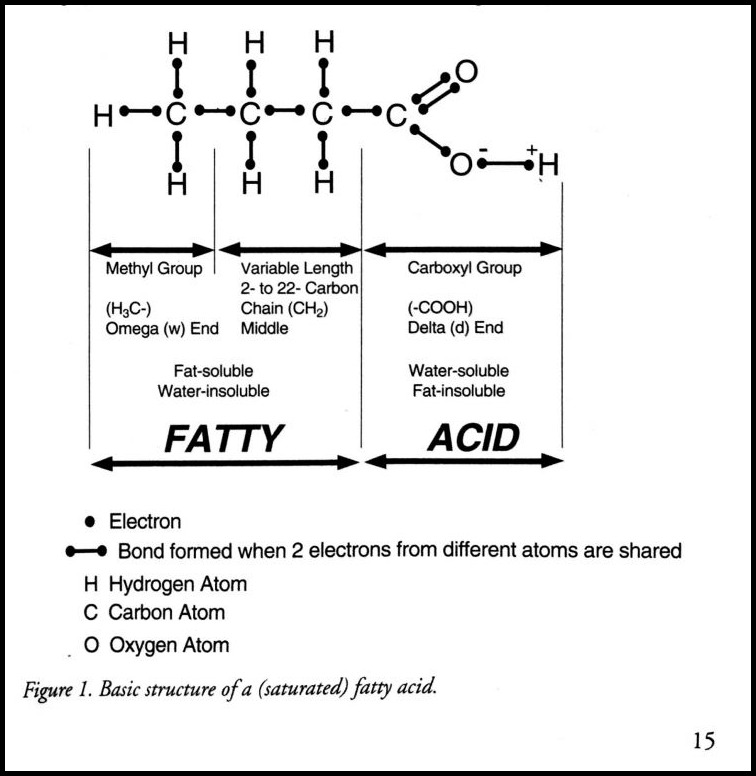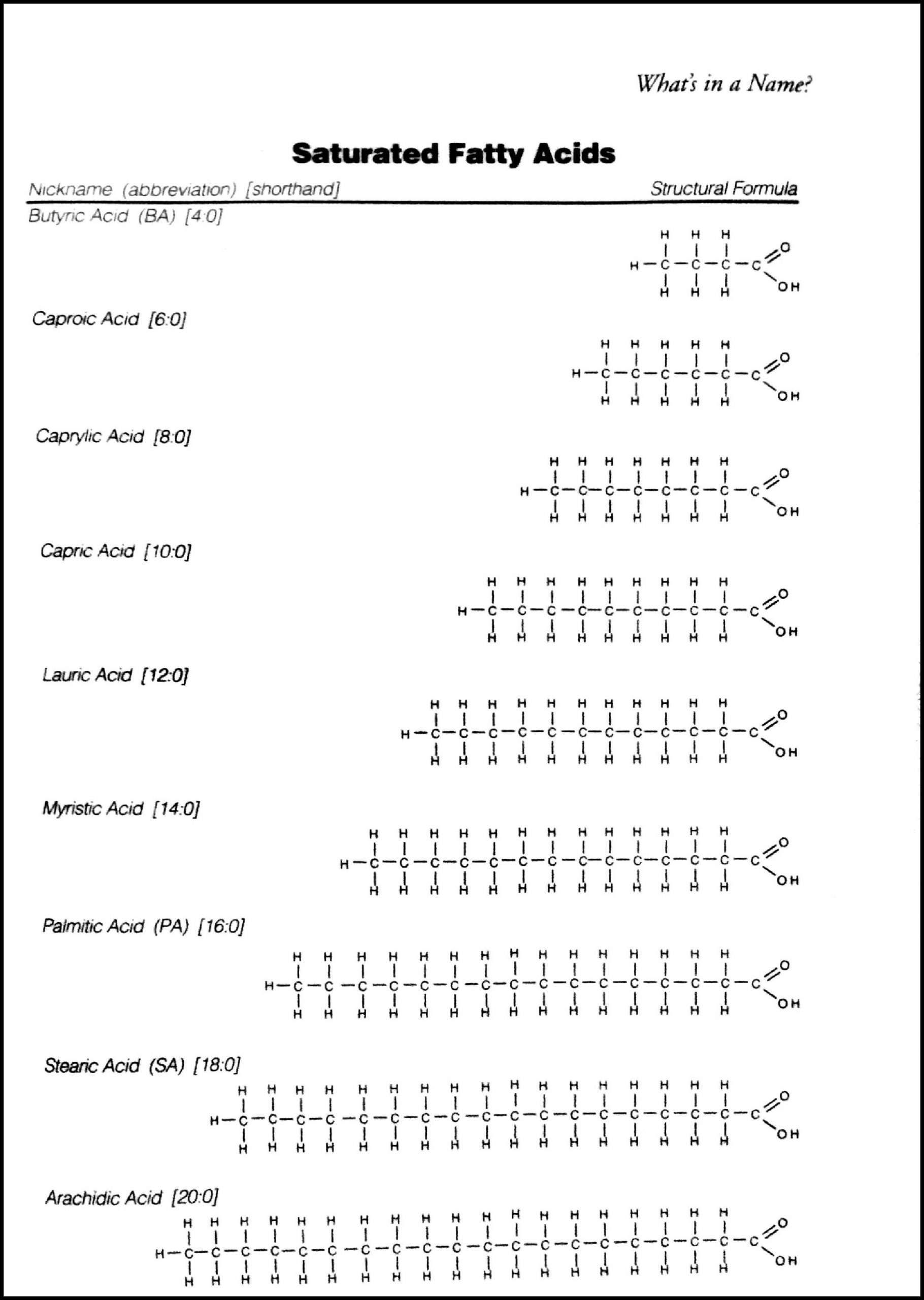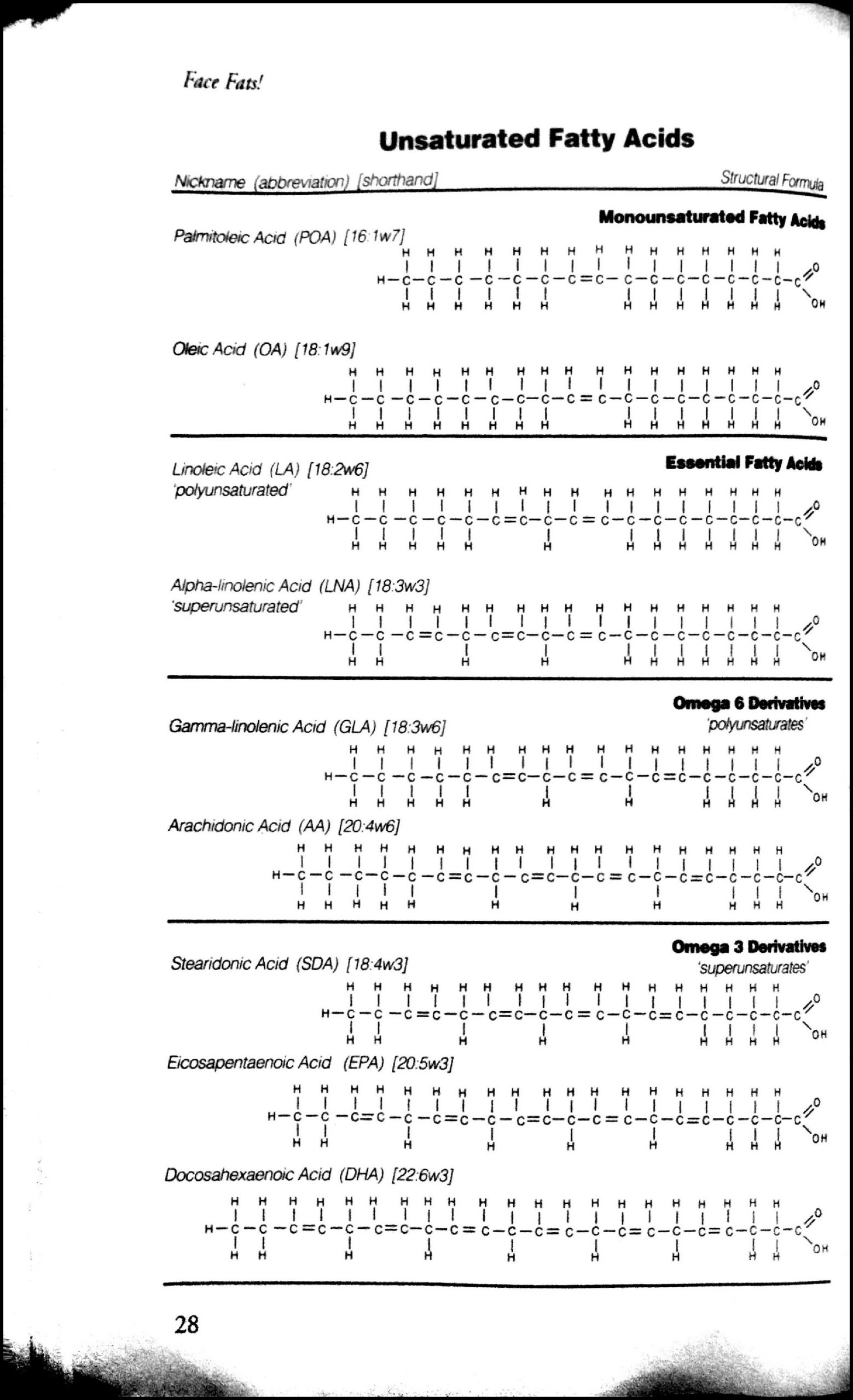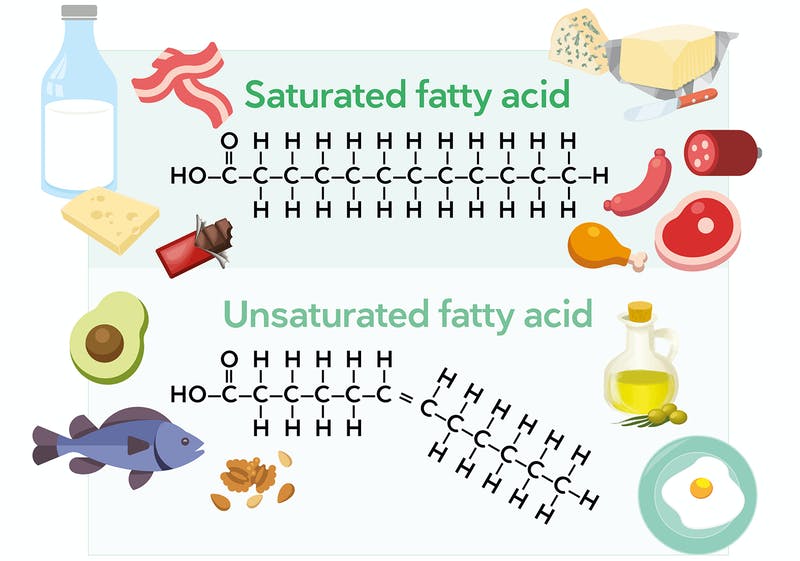
Fats are the most misunderstood of the three macronutrients, and the truth is that there is a lot to know before we can make confident and informed decisions about the fats we choose to consume and avoid. A good place to start is by understanding what fatty acids are and their different degrees of saturation and unsaturation.
When we talk about fats, we are talking about a few interchangeable terms like fats, oils, lipids, and triglycerides. Triglycerides are the stored form of fat and a broken down triglyceride equates to one glycerol molecule and three individual fatty acid molecules. It is these individual fatty acids that can be categorized as saturated or unsaturated, but what does that mean exactly?
Differing Chemical Structures
It means that different fatty acids have different chemical structures. First, all fatty acid molecule consists of a fatty chain and an acid end. The fatty chain is made up entirely of carbon and hydrogen atoms, ends in a methyl (-CH3) group, and dissolves in oil. The acid end of the molecule is known as a carboxyl (-COOH) group and dissolves in water. Inspecting the visual below will help us familiarize ourselves with the general structure of a (saturated) fatty acid.
What Saturated Fats Look Like
After that, we can look at the list below, along with visual representations, of nine of the most commonly found saturated fatty acids found in nature. These fats are referred to as saturated fatty acids because they are “saturated” with hydrogen atoms. In these fatty acids, all carbons are linked through single bonds while the remaining bonds are occupied by hydrogen, resulting in a saturated fatty acid.
What Unsaturated Fats Look Like
Now what are unsaturated fatty acids? “Unsaturated” signifies the presence of one or more double bonds between carbon atoms, eliminating one pair of hydrogen atoms for every double bond. Unsaturated fatty acids can be further categorized into monounsaturated and polyunsaturated fats. The prefix “mono” means one (double bond between carbons), and the prefix “poly” means two or more (double bonds between carbons). The list below, along with visual representations, will help familiarize ourselves with common unsaturated fatty acids found in nature.
Physical Properties and Real Life Usage
Saturated fatty acids can be described as relatively stable and inert (inactive) molecules. They are slow to react with other chemicals, carry no electric charge, and tend to aggregate or combine, so they are often found in solid form. They are simple, sluggish, and uninteresting molecules. Saturated fatty acids are the most resistant to the degrading effects of light, oxygen, and heat. This makes saturated fatty acids the most appropriate to use when you are planning to expose them to light, oxygen, and heat.
Unsaturated fatty acids, on the other hand, can be described as less stable and more chemically active. They carry negative charges and repel one another, preferring to disperse and move apart rather than combine. This is why they we generally find them in liquid form. The more unsaturated a fatty acid us, the more susceptible it is to the degrading effects of light, oxygen, and heat. This makes unsaturated fatty acids the most appropriate to use when they are protected from light, oxygen, and heat.
If a vulnerable fatty acid is exposed to too much light, oxygen, and heat, it will oxidize and produce free radicals. This oxidation will break down susceptible oils into many different components that can produce toxic, and sometimes unknown, effects on the body. The oil then becomes rancid.
Conclusion
Examples of saturated fats are butter, ghee (clarified butter), coconut oil, lard, and beef tallow. These fats are best used for cooking and exposing to high heat, although they do have a smoking point.
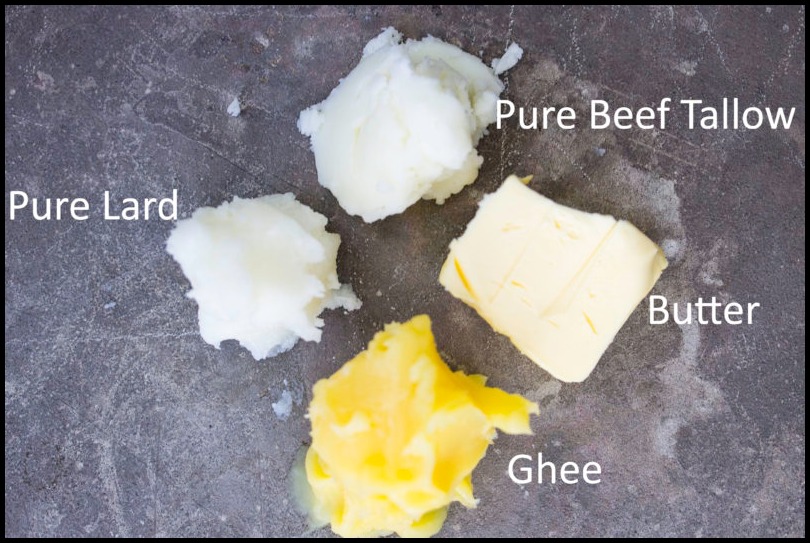
Examples of unsaturated fats are olive oil, peanut oil, vegetable oils (like sunflower, corn, canola, etc.), and fish oils. These oils should be well protected from light, oxygen, and heat, and although not suitable for cooking, can be used to dress salads and condiments.
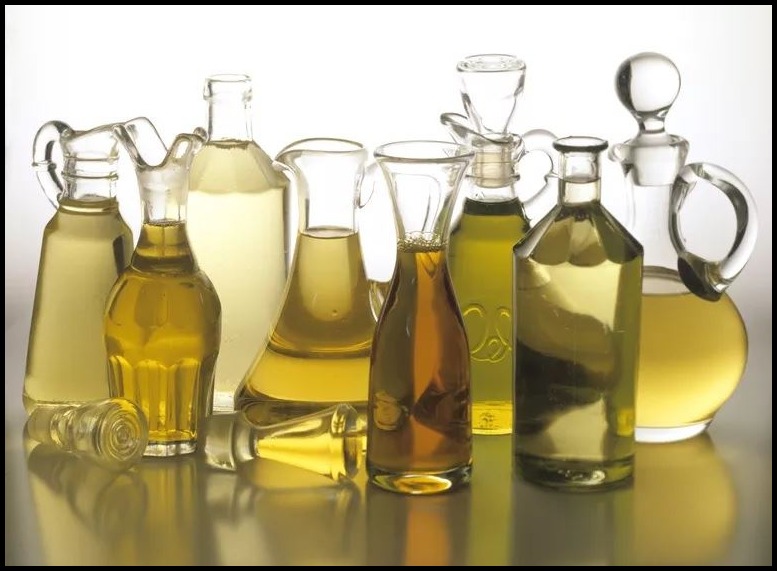
Knowing your fats and their appropriate uses is a game changer. Their differing physical properties dictate their use, and if you can understand that and correctly apply that to your diet, then you will be so far ahead.
